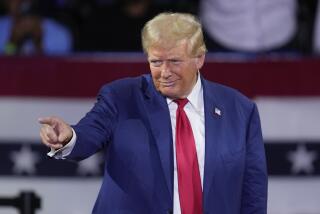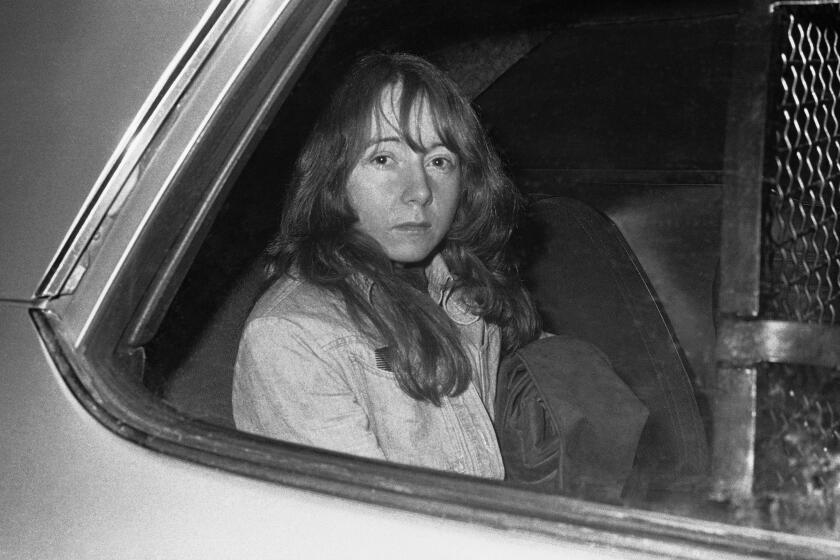Justice Stevens will not be easily replaced
President Obama has said that he will seek to replace retiring Supreme Court Justice John Paul Stevens with someone who has “similar qualities.”
If the president is looking for another brilliant lawyer to join the court’s liberal wing, he might succeed. If, however, he wants to find someone with the kind of quirky independence that Stevens demonstrated for much of his judicial career, the president has little or no chance. The constitutional landscape has changed too much since Stevens was appointed in 1975.
Stevens is America’s last pre-Roe justice — in other words, the last justice chosen before the abortion issue reshaped the Supreme Court appointment process. In strictly chronological terms, of course, Stevens was appointed two years after the court decided Roe vs. Wade, the 1973 case that first protected the abortion right. But when Stevens faced the Senate, Roe had not yet become ground zero in America’s culture wars.
Capital punishment was the big issue at the Stevens confirmation. Sens. Edward M. Kennedy of Massachusetts and John Tunney of California grilled Stevens about his views on the death penalty. Several senators interrogated him about the government’s power to tap phones or spy on civilians. No senator, however, asked Stevens a single question about abortion. The Senate confirmed him, 98 to 0.
During his first 15 years on the court, Stevens defied ideological categorization. He voted with the liberals in cases about privacy rights and school prayer but with the conservatives in some cases about affirmative action and indecent speech. He staked out a middle position on the death penalty. In abortion cases, Stevens agreed with his conservative colleagues that states could prohibit teenage girls from getting abortions without their parents’ consent.
When I clerked for Stevens in 1989-90, his idiosyncratic jurisprudence frustrated the law clerks working for Thurgood Marshall and William Brennan, the court’s two most liberal justices.
The Marshall clerks posted a caricature of Stevens, festooned with doodles mocking his Midwestern persona and middle-of-the-road jurisprudence, on their office bulletin board. His unpredictable votes seemed to irk them even more than the resolute conservatism of William Rehnquist and Antonin Scalia, who at least knew which side they were on.
Stevens did not think judges should be on one side or the other of an ideological fight. He was a true judicial maverick.
Nowadays that word gets misused by the likes of Sarah Palin, who toes the ideological line every step of the way but calls herself a maverick because she likes to say outrageous things. Palin is a provocateur, not a maverick. Stevens resisted ideological ruts and blazed his own trail.
American politics changed, and so did the court. In the late 1970s, the religious right became a major force in American politics. Ronald Reagan promised to appoint justices who would overturn Roe. Interest groups on the left and the right drew battle lines every time a Supreme Court vacancy occurred.
From then on, no president — Republican or Democrat — could choose Supreme Court nominees without paying attention to the abortion issue. And no nominee could survive the confirmation hearings without answering — or, more often, deflecting — a barrage of questions about Roe.
As a result, ideological categories hardened. The abortion issue came to define the court. If you know where a justice stands on abortion today, you can deduce, with very few exceptions, his or her positions on federalism, gun control, affirmative action, gay rights, campaign finance, tuition vouchers for religious schools — the list goes on and on. In 1975, that was not so.
Stevens changed too. He admits that he reversed himself about the death penalty, which he now regards as unconstitutional. Most observers think that his views about affirmative action have become more liberal, although Stevens contends that his early and recent votes are consistent with one another.
What changed most during Stevens’ tenure was the court itself. It became more conservative and more polarized. Its docket evolved into a set of which-side-are-you-on choices between clearly defined liberal and conservative positions.
Twenty years ago, court watchers complained that Stevens was irrelevant because his jurisprudence was so idiosyncratic. He gets more respect today, when he is hailed (or reviled) as the reliable “leader of the liberal bloc.” I confess, though, that I miss the maverick. And although I have never asked Stevens, I suspect that he misses that role too. When I worked for him, he took great pride in judging each case without preconceptions, and he disliked it when the court fractured into predictable blocs.
Was Stevens the last judicial maverick? Maybe not; perhaps we will see a post-Roe version someday. For the time being, though, we remain smack dab in the Roe era. If Obama is fortunate, he will find a nominee whose constitutional ideals and legal acumen make him or her worthy to succeed Stevens. But that is as far as the parallel can go.
No matter how qualified his nominee, the president can expect a confirmation battle far more bruising than what Stevens experienced. And the president will find it very hard to nominate anyone who can replicate the imaginative independence that was a hallmark of the last justice appointed before the abortion debate changed the court.
Christopher L. Eisgruber is provost of Princeton University and the author of “The Next Justice: Repairing the Supreme Court Appointments Process.” He clerked for Justice John Paul Stevens in 1989 and 1990.
More to Read
Get the L.A. Times Politics newsletter
Deeply reported insights into legislation, politics and policy from Sacramento, Washington and beyond. In your inbox three times per week.
You may occasionally receive promotional content from the Los Angeles Times.










